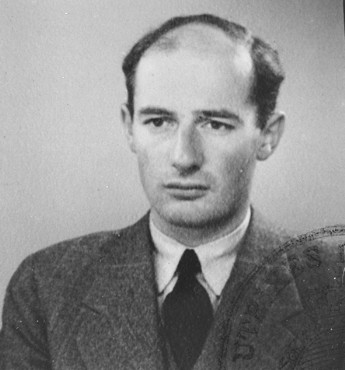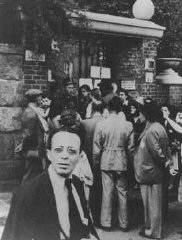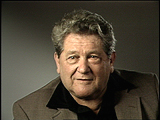RAOUL WALLENBERG AND THE RESCUE OF JEWS IN BUDAPEST
Raoul Wallenberg was born on August 4, 1912, in Stockholm, Sweden.
Having studied in the United States in the 1930s and having established himself in a business career in Sweden, he was recruited by the US War Refugee Board (WRB) in June 1944 to travel to Hungary. Given status as a diplomat by the Swedish legation, Wallenberg's task was to do what he could to assist and save Hungarian Jews.
Assigned as first secretary to the Swedish legation in Hungary, Wallenberg arrived in Budapest on July 9, 1944. Despite a complete lack of experience in diplomacy and clandestine operations, he led one of the most extensive and successful rescue efforts during the Holocaust. His work with the WRB and the World Jewish Congress prevented the deportation of tens of thousands of Hungarian Jews to theAuschwitz-Birkenau killing center.
Hungary had been an ally of Germany, but German defeats and mounting Hungarian losses led Hungary to seek an armistice with the western Allies. To forestall these peace feelers, German forces occupied Hungary on March 19, 1944 and forced the Hungarian head of state, Miklos Horthy, to appoint a pro-German government under Dome Sztojay. The Sztojay government was prepared not only to continue the war, but also to deport Hungarian Jews to German-occupied Poland. Shortly after the occupation, Hungarian officials began to round up Hungarian Jews and to transfer them into German custody.
By July 1944, the Hungarians and the Germans had deported nearly 440,000 Jews from Hungary, almost all of them to the Auschwitz-Birkenau, where the SS killed approximately 320,000 of them upon arrival and deployed the rest at forced labor in Auschwitz and other camps. Nearly 200,000 Jews remained in Budapest; the Hungarian authorities intended to deport them as well in compliance with German requests.
With authorization from the Swedish government, Wallenberg began distributing certificates of protection issued by the Swedish legation to Jews in Budapest shortly after his arrival in Hungarian capital. He used WRB and Swedish funds to establish hospitals, nurseries, and a soup kitchen, and to designate more than 30 “safe” houses that together formed the core of the "international ghetto" in Budapest. The international ghetto was reserved for those Jews and their families holding certificates of protection from a neutral country.
After the Hungarian fascist Arrow Cross movement seized power with the help of the Germans on October 15, 1944, the Arrow Cross government resumed the deportation of Hungarian Jews, which Horthy had halted in July before the Budapest Jews could be deported. As Soviet troops had already cut off rail transport routes to Auschwitz, Hungarian authorities forced tens of thousands of Budapest Jews to march west to the Hungarian border with Austria. During the autumn of 1944, Wallenberg repeatedly and, often personally, intervened to secure the release of bearers of certificates of protection and those with forged papers from the columns of marching people, saving as many as possible.
Wallenberg's colleagues in the Swedish legation and diplomats from other neutral countries also participated in rescueoperations. Carl Lutz, the Consul General in the Swiss legation, issued certificates of emigration, placing nearly 50,000 Jews in Budapest were under Swiss protection as potential emigrants to Palestine. Italian businessman Giorgio Perlasca posed as a Spanish diplomat; he issued forged Spanish visas and established safe houses, including one for Jewish children.
When Soviet forces liberated Budapest in February 1945, more than 100,000 Jews remained, mostly because of the efforts of Wallenberg and his colleagues. Wallenberg was last seen in the company of Soviet officials in mid-January 1945. He reportedly died in a Soviet prison in 1947, although the exact date and circumstances of his death are still unknown.
Related Articles:
Related Links:
Geographies of the Holocaust: The Budapest Ghetto »
USHMM Library Bibliography: Raoul Wallenberg »
USHMM map animation: Rescue »
Published by the USHMM: With Raoul Wallenberg in Budapest »
Published in association with the USHMM: Letters and Dispatches, 1924-1944 »
The International Raoul Wallenberg Foundation »
The Wallenberg Endowment (University of Michigan): Lecture and Medal »
See related products in Museum shop »
USHMM Library Bibliography: Raoul Wallenberg »
USHMM map animation: Rescue »
Published by the USHMM: With Raoul Wallenberg in Budapest »
Published in association with the USHMM: Letters and Dispatches, 1924-1944 »
The International Raoul Wallenberg Foundation »
The Wallenberg Endowment (University of Michigan): Lecture and Medal »
See related products in Museum shop »







No comments:
Post a Comment